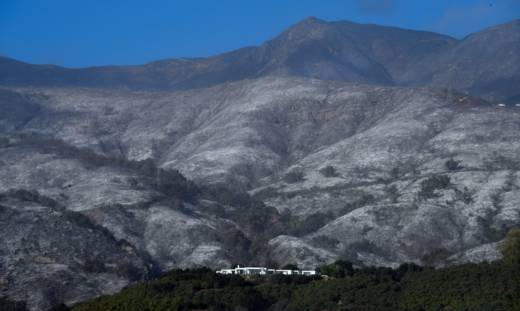Prop. 68 also includes $767 million for projects to enhance wildlife and watersheds. Many of these projects will have indirect benefits to water quality. For example, each of the state’s designated regional habitat conservancies are allocated money in the bond to continue their efforts to protect land and water. Funds are also designated to improve fish passage at water diversions along streams or where streams are impacted by road crossings.

The Association of California Water Agencies prepared this chart comparing funding levels for water projects in the two bond measures that will be on the ballot this year. (Image Courtesy Association of California Water Agencies)
The November bond measure targets a much broader array of water projects. For example, it includes $100 million to change the way existing water storage reservoirs are operated so they can capture more runoff. The dams themselves would not be changed, only their operating rules. It also includes $550 million for projects to capture and reuse stormwater, $300 million for water conservation projects and $60 million to improve data gathering on the state’s water resources.
This bond also includes a particular focus on groundwater, with $640 million designated to help implement the Sustainable Groundwater Management Act, the state’s first effort to comprehensively regulate groundwater extraction. Most of this money will be offered as grants to help dozens of new groundwater management agencies acquire land and water from willing sellers to begin recharging depleted aquifers.
Is there any downside to these bonds we should know about?
In a few cases, these ballot measures are asking taxpayers across the state to pay for projects that should be helping themselves.
For example, the November bond measure includes $200 million to help pay for repairs at Oroville Dam, which was heavily damaged by storms in February 2017. This money is being made available in case the Federal Emergency Management Agency doesn’t cover all the repair costs. But Oroville Dam doesn’t serve every Californian. It is part of the State Water Project, which provides some water for about two-thirds of the state’s residents.
The same bond includes $750 million to repair the Friant-Kern Canal. The canal is buckling because of heavy groundwater pumping in the San Joaquin Valley that caused the land to subside. This has compromised the canal’s water-delivery capacity. In short, every California taxpayer is being asked to fix a canal that serves about 14 agricultural irrigation districts, which was damaged by a handful of groundwater users.
Similarly, a lot of the money for park projects in Prop. 68 will be spent in locations that most Californians will never visit. This is particularly so with the $725 million set aside to develop and improve local community parks. It could be argued, however, that this money will improve the general welfare of the populace, making the state overall a more pleasant place to live. But that’s hard to quantify.
Virtually all bond measures contain funding like this that benefits a local area and not the state as a whole. Partly this is done to ensure voters in every part of the state find a reason to vote for it. It’s up to each voter to decide if the bond measure, on balance, is a good investment of their tax dollars.
Bond money isn’t free. How much will these propositions cost the state?
The Legislative Analyst’s Office estimates that repaying the $4.1 billion in bonds offered up by Prop. 68 will cost the state $200 million every year for 40 years.
The $8.9 billion November bond measure is estimated to have annual repayment costs about twice that. The state attorney general’s office estimated in April, when the measure was certified for the ballot, that repayment would cost about $433 million annually for 40 years.
Money to repay the bonds comes out of the state’s general fund. In total, California spends less than 5 percent of its total general tax revenue paying off bonds every year.
This article originally appeared on Water Deeply, and you can find it here. For important news about the California drought, you can sign up to the Water Deeply email list.

